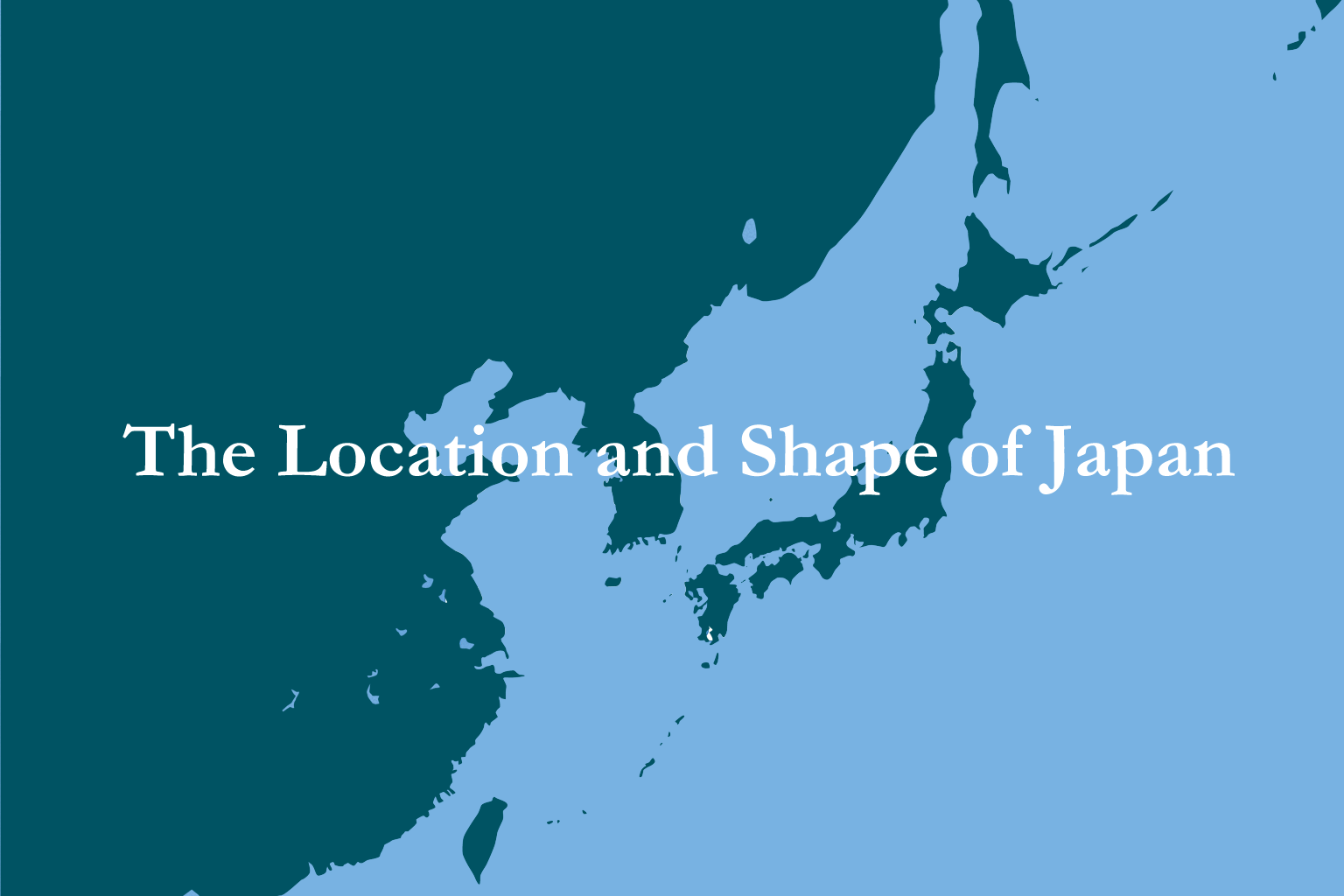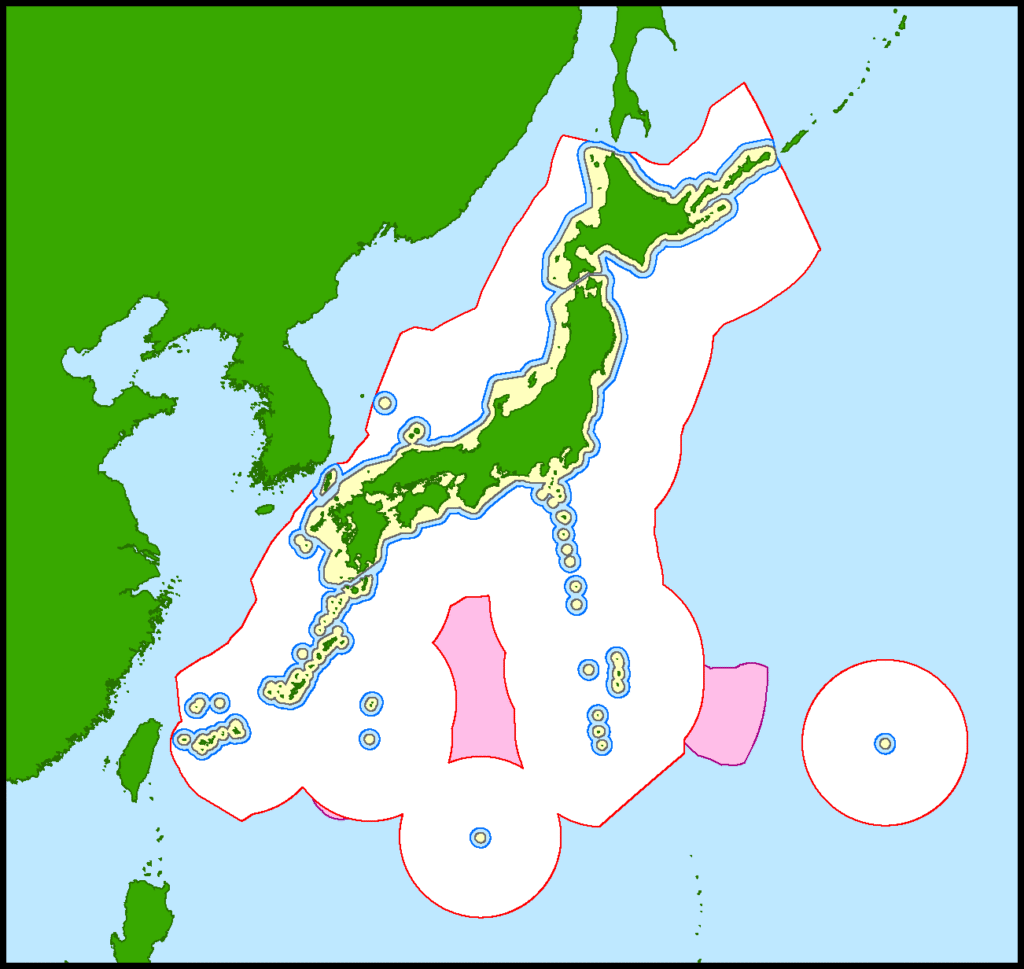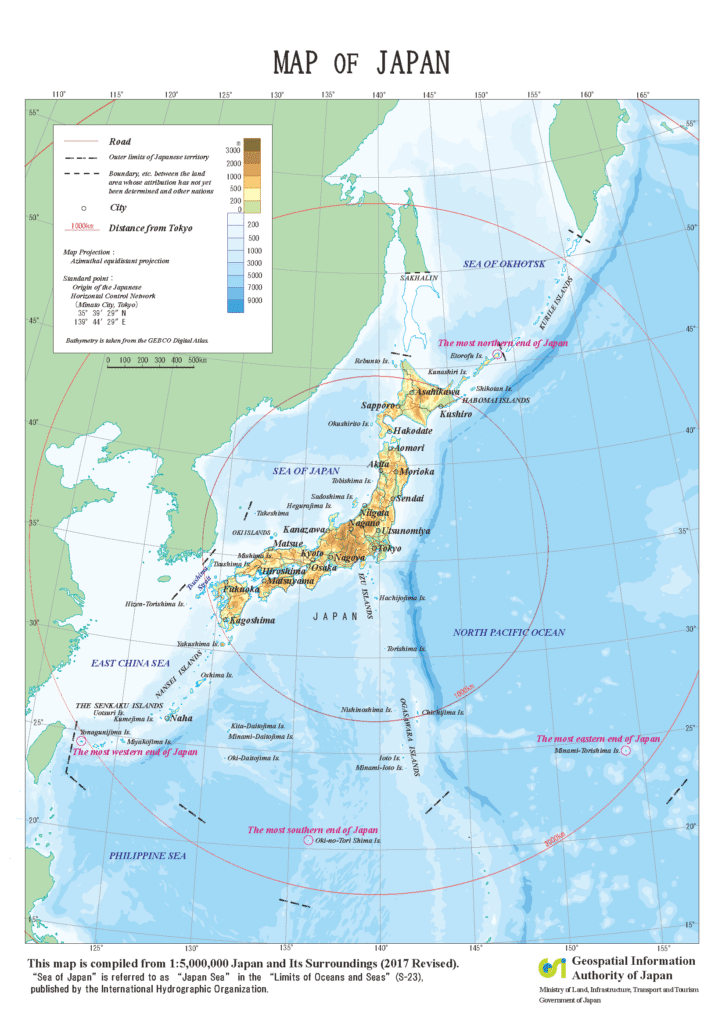Japan is an island nation located in East Asia. Separated from the continent by seas, it has developed a unique natural environment and culture. This article introduces Japan’s shape, surrounding environment, and geographical features such as latitude and longitude, while considering its position in the world.
The Arc-Shaped Japanese Archipelago
Japan is not a single island but consists of about 6,800 islands, large and small. Among them, the four main islands (Hokkaido, Honshu, Shikoku, and Kyushu) make up most of the national land.
These islands stretch in an arc from north to south, forming an overall elongated shape. The distance from the northernmost to the southernmost point is about 3,000 km, which is comparable to the distance from London to northern Africa.
Because of this north-south length, Japan is characterized by diverse climates, nature, and lifestyles depending on the region.
Neighboring Countries Around Japan
Japan is located on the western side of the Pacific Ocean and is near the following countries:
West: South Korea, China, North Korea
North: Russia
South: Taiwan, the Philippines
East: The vast Pacific Ocean (and beyond it, the United States mainland)
All of these countries are separated from Japan by sea, making Japan a clearly maritime nation. On the map, it is drawn as islands floating at the eastern edge of Asia, and politically and economically, it is deeply connected to both Asia and the Pacific.
Comparing Japan’s Location With Other Cities
To better imagine Japan’s position, let’s compare distances and directions from Tokyo to several cities.
| City | Distance from Tokyo | Approximate Direction |
|---|---|---|
| London | About 9,600 km | Northwest |
| Seoul (South Korea) | About 1,200 km | West |
| Beijing (China) | About 2,100 km | Northwest |
| Honolulu (Hawaii) | About 6,600 km | Southeast |
| Sydney (Australia) | About 7,800 km | South |
| Los Angeles (USA) | About 8,800 km | East |
Thus, Japan is located on the eastern side of Asia, yet also close to the United States across the Pacific. It can be said to lie at a crossroads connecting East and West.
Latitude and Longitude of Japan
The latitude and longitude ranges of Japan are as follows:
Latitude (North): About 20° (Okinotorishima) to about 45° (Etorofu Island)
Longitude (East): About 123° (Yonaguni Island) to about 154° (Minamitorishima)
Compared with Europe, Honshu (the largest central island of Japan) lies around 35° north latitude. This is roughly the same latitude as Madrid in Spain, Naples in Italy, and Los Angeles in the United States.
This latitude zone is relatively warm, and Japan’s climate is characterized by four distinct seasons.
Japan’s Land and Maritime Areas
The land area of Japan is about 378,000 square kilometers, about 1.5 times the size of the United Kingdom (about 243,000 square kilometers). However, since the land is elongated and divided, domestic travel often takes longer than the distances might suggest.
Japan also has very wide maritime areas, including its territorial waters and Exclusive Economic Zone (EEZ), giving it an important role as a maritime nation. In many aspects such as fisheries, marine resources, and sea transportation, Japan is deeply connected to the ocean.
The Four Extremities of Japan
The four endpoints of Japan (the easternmost, westernmost, northernmost, and southernmost locations) are as follows:
| Direction | Location | Jurisdiction | Latitude/Longitude |
|---|---|---|---|
| Northernmost | Etorofu Island (under Russian control) | Northern Territories (claimed by Japan) | 45°33’N |
| Southernmost | Okinotorishima | Ogasawara Village, Tokyo | 20°25’N |
| Easternmost | Minamitorishima | Ogasawara Village, Tokyo | 153°59’E |
| Westernmost | Yonaguni Island | Yonaguni Town, Okinawa Prefecture | 122°56’E |
*The northernmost Etorofu Island is officially claimed by Japan, but currently under Russian administration. The northernmost point accessible as domestic travel is Cape Soya in Hokkaido.
In Conclusion
Japan consists of an arc-shaped chain of islands located at the eastern edge of Asia. Surrounded entirely by the sea, it has both geographical isolation and the blessings of abundant marine resources and cultural diversity.
The geography of Japan holds profound characteristics in its elongated form and close relationship with the sea.




Comments